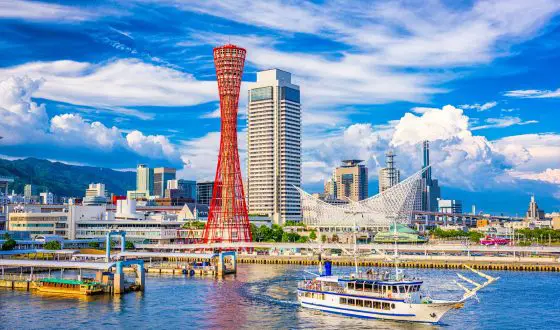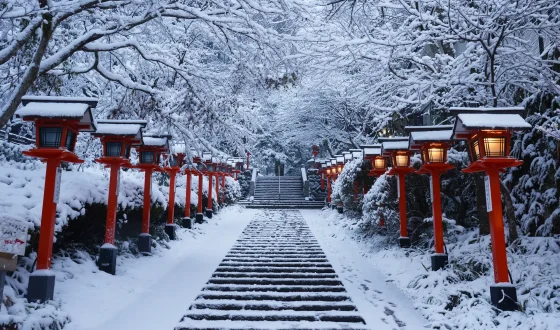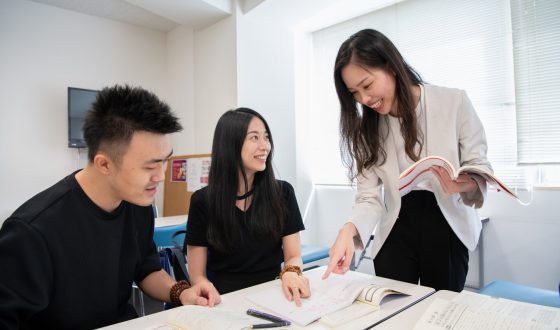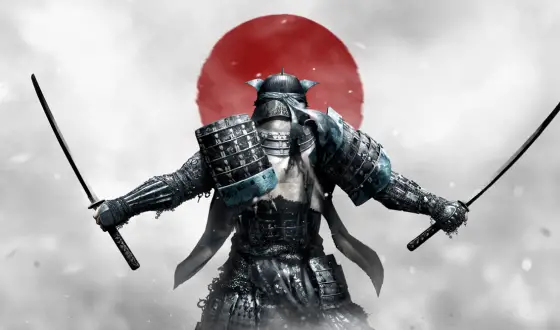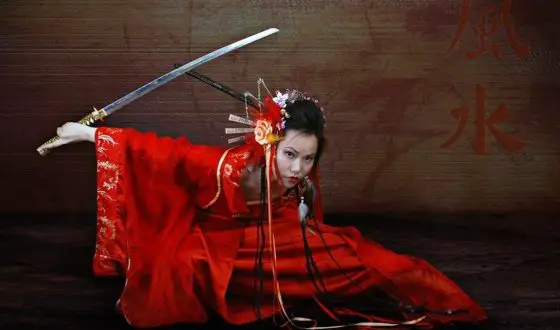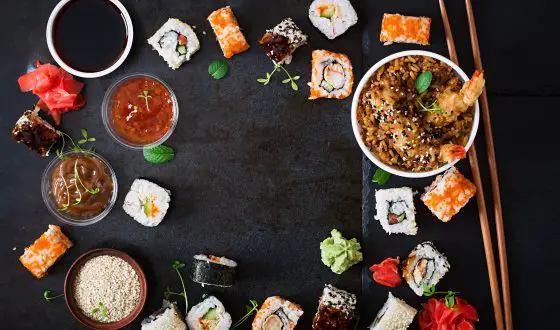A Traditional Japanese Culture: What is Rakugo?
Rakugo is a topic that cannot be avoided while discussing Japanese customs, but what is Rakugo? This essay will provide you with all the knowledge and information you need to understand this great type of art known as Rakugo.
What is Rakugo?
In Japan, Rakugo (落語), which translates as “fallen words,” is a form of verbal entertainment. There is only ever one actor on stage, yet they each play every single character in the play by themselves.
Traditional Japanese comic storytelling is known as rakugo. It continues to be a well-liked type of entertainment in Japan, where audiences have been entertained by it for many centuries. The rakugo performers, also known as rakugoka, tell amusing stories and portray a variety of characters while sitting on a small cushion with only a fan and a little piece of cloth as props.
Rakugo tales are often comic in tone and frequently center on banal occurrences, human frailties, and wordplay. Rakugoka represent numerous characters in the same story by switching up their voices, facial emotions, and body language. The show often starts with a comedic monologue, moves into the main story, and ends with a snappy, witty punchline.
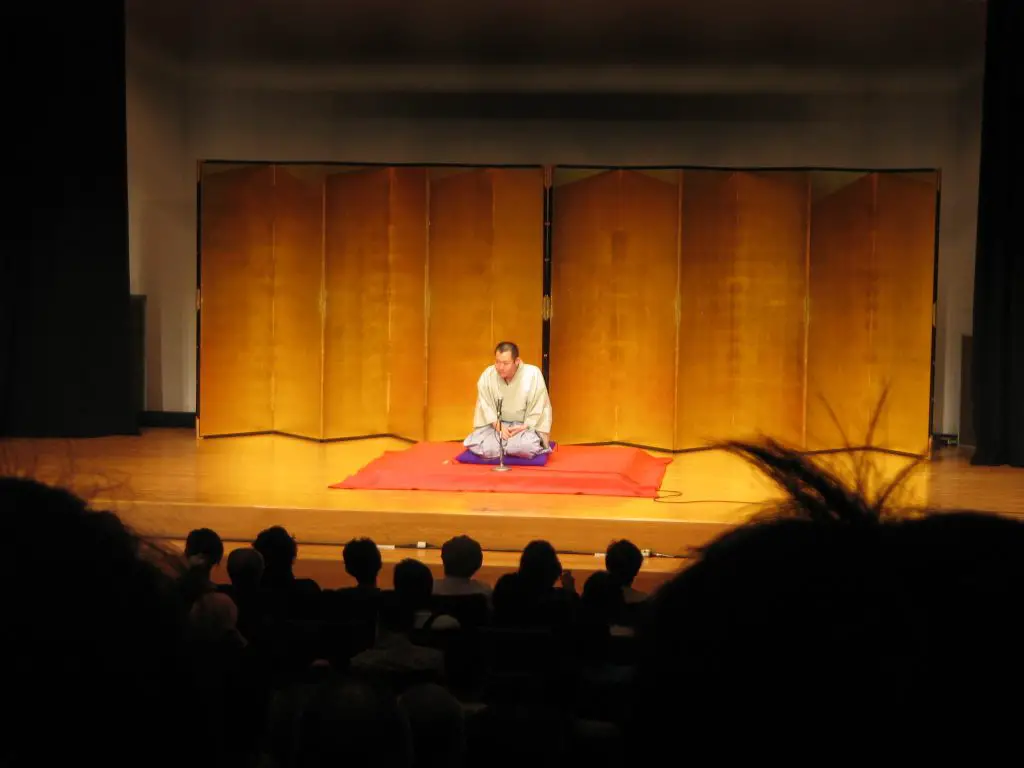
In Japan, Rakugo (落語), which translates as “fallen words,” is a form of verbal entertainment. (Source: Internet)
Rakugo calls for a great level of artistry and talent. Excellent storytelling skills, humorous timing, and the capacity to enthrall an audience are all essential for rakugoka. They must also have improvisational skills and be able to modify their story in response to the audience’s emotions.
Rakugo has a long history and has been practiced by performers for many years. Its origins are in Japan’s Edo era (17th to 19th century), when it was first performed by traveling entertainers. It developed into a more sophisticated art form throughout time and grew to be identified with a certain aesthetic and set of narratives.
Nowadays, rakugo performances take place in specialized theaters called yose, where viewers can delight in the distinctive fusion of comedy and storytelling. Rakugo has also attracted attention on a global scale, with performances taking place outside of Japan to reach a larger audience.
Background of Rakugo
People already enjoyed exchanging amusing stories throughout the Heian era. Buddhist monks of the period enjoyed quoting specific story collections to present Buddha’s teachings in a captivating manner that would hold the audience’s interest.
Buddhist monks were employed by the strong daimy during the Sengoku period, a turbulent time in Japan when feudal lords known as daimy fought one another for supremacy, to teach them about literature and how to be effective conversationalists.
A monk by the name of Anrakuan Sakuden was exceptionally skilled at it and produced a collection of 1000 tales, some of which served as the basis for rakugo.
But this sort of entertainment didn’t start to become popular among common people until the Edo era. Rakugo evolved into a form of universally funny storytelling in which a variety of entertainers engaged.
Rakugo evolved into a distinct genre over time and developed into a market for devoted rakugo performers. The first rakugo book was written in 1623 and is titled Seisuisho, which translates to “laughter to banish sleep.” Rakugo once enjoyed great popularity, but this soon changed.
A man by the name of Utei Enba initiated a rakugo renaissance in Edo (current-day Tokyo) in the late 18th century, and several performance ensembles soon followed.
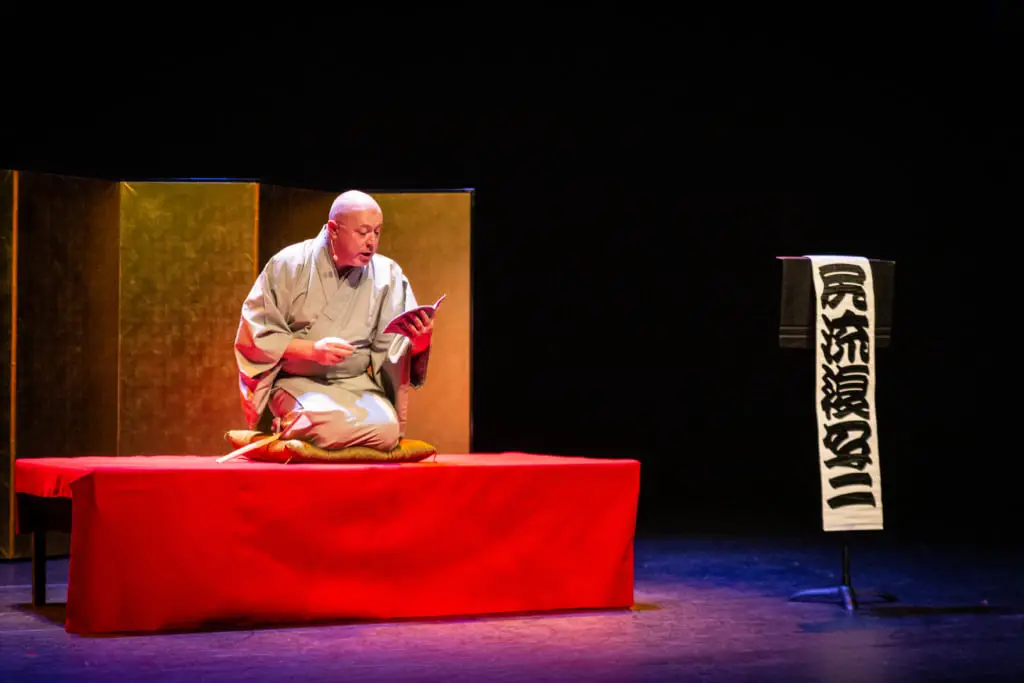
Rakugo evolved into a distinct genre over time and developed into a market for devoted rakugo performers. (Source: Internet)
Rakugo tales were also recorded at this time so that future generations may appreciate them as well. Rakugo stories typically focus on events that can occur in various contexts of daily life, such as the problems faced by the typical worker or the concerns of kabuki actors.
Nowadays, some even make fun of the various dialects spoken in Japan. Performances took place throughout this revival period in Edo, Osaka, and Kyoto. While the Kyoto practice eventually went extinct, the Edo and Osaka traditions have endured.
Beginning of a Rakugo storytelling
On the main streets of Kyoto’s Shijo Kawahara and Kitano, people would play “Otoshi-banashi,” or “Otoshi-banashi,” which were humorous stories with a twist, during the Genroku period of the Edo period. They are known as “Rakugoka,” and this is considered to be the start of Rakugo.
The storyteller presented humorous tales while seated on a platform that resembled a table, collecting monies from the mat-seated audience.
Around this time, it’s thought that a style resembling modern Koza emerged. A popular storyteller by the name of Hikohachi Yonezawa arrived in Osaka between the end of the Genroku era and the beginning of the 1700s.
He is considered to have played a significant role in the development of Kamigata entertainment and to have written the story that served as the basis for the legendary rakugo classic “Jugemu” (link to article on 5 recommended rakugo).
At about the same time, storytellers from Kamigata were invited to perform “zashiki banashi,” which was equally well-liked as kodan, in playhouses, bathhouses, drinking gatherings, and other different residences throughout Edo.
Examples of Rakugo
Let’s look at 3 rakugo story examples right now:
One of the most well-known rakugo tales in Japan goes like this: “A family was having trouble coming up with a name for their new baby boy, so the father went to the temple and asked the chief priest to suggest an auspicious name.
1. The most famous rakugo stories in Japan
Jugemu was the first name the priest recommended. The baby received all of the names since the father could not pick which one he preferred. Jugemu accidentally falls into a lake one day, and his parents just make it in time to save him because no one can pronounce his name.
The following is Jugemu’s full name:
- Gūrindaino-ponpokopīno-ponpokonāno
- Chōkyūmeino-chōsuke
- Jugemu-jugemu
- Gokōnosurikire
- Kūnerutokoroni-sumutokoro
- Yaburakōjino-burakōji
- Paipopaipo-paiponoshūringan
- Shūringanno-gūrindai
- Kaijarisuigyo-no Suigyōmatsu
- Unraimatsu Fūraimatsu”
2. A relatively brief one from the 17th century
That reads, “A man passes out in a bathtub. In the ensuing chaos, a doctor finally shows up, checks the man’s pulse, and calmly instructs, “Pull the plug and let the water out.” The doctor exclaims, “Good. The water has totally evaporated, and the tub is empty. After that, cover it and bring the man to the grave.
3. A modern rakugo narrative
You can look like this:
“The opportunity to enjoy a beverage with you today was wonderful. Much obliged!
Me too. Yep. We got to enjoy a drink together today, and I’m really glad about it!
I’m very happy that this shop allowed us to meet.
Me too. I feel very joyful.
Much obliged! U-huh!
Starting now, let’s stay in touch. Okay?
Maintaining contact will be a delight! Yes! You live somewhere, where is that?
By the way, feel free to visit my house at any moment. You exit the building, turn right, descend the hill, turn right at the first corner, and the second house will be on your right.
Alright. Go outside the store and down the hill, stopping at the second house and the first corner, correct? Ah, that’s my house, I suppose.
No, what are you saying? Go outside and down the hill to the second house on your right after turning around the first bend. It’s my home there!
That cannot possibly be my home.
Not at all, that is my home.
No, man, that’s my house.
How could you say that!
Hello, hello, boss! Should we intervene to stop the two from fighting?
Keep your distance from them; they are family.”
The stage of Rakugo
It could take a little while to get acquainted with Rakugo’s depiction of the mundane and exceptional world of the Edo and Meiji periods.
Additionally, there are tales of red-light district entertainment that are difficult to imagine nowadays. The performer will give a brief explanation before the story if it takes place in a complex universe.
Even though the historical context is different from the present, the humanity and humor that are characteristic of contemporary individuals are shown. This is not a form of art that values challenges.
Along with the traditional rakugo tales set in the Edo and Meiji eras, contemporary rakugo tales that playfully depict individuals in the modern age are also well-liked.
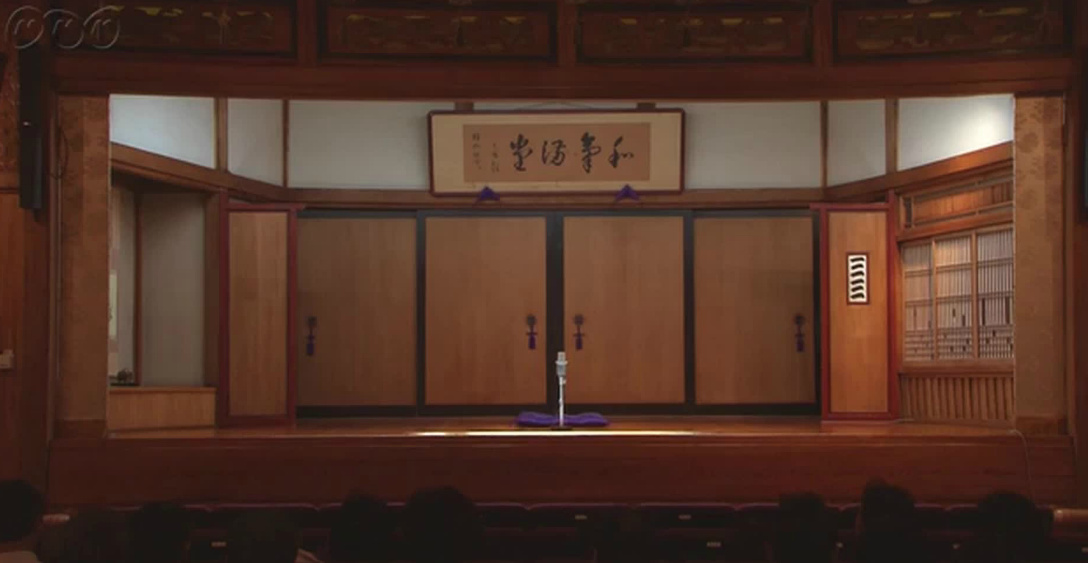
It could take a little while to get acquainted with Rakugo’s depiction of the mundane and exceptional world of the Edo and Meiji periods. (Source: Internet)
In any event, if you’re a newbie, you shouldn’t worry about anything challenging and should simply give into the performer’s narrative.
The majority of rakugo is composed of ”comic stories,” which are supposed to make you laugh, but there are also ”jinjo-banashi,” which are meant to make you feel something.
There are many stories that combine both of these features, making this distinction less than clear-cut. If a comedy fan joins us, there is absolutely no issue. If you find it hilarious, laugh aloud.
You will start to comprehend the nuances of humanity subtle conditions and tastes that are challenging to comprehend on the surface as you laugh. You’ll discover as well that laughter itself is not what matters.
SEE MORE >>>>
- Top 9 Best Japanese Knife Brands: Reviewed by Experts
- The Irresistible Elegance of Paste Used in Japanese Cooking
- Tokyo Tower Vs Eiffel Tower: What are the main differences between them?
What should I do in preparation to get ready to listen to Rakugo?
Storytelling, kabuki, bunraku, noh, kyogen, kyoku, and gidayu are among the traditional performing arts of Japan. However, some of these cannot be fully appreciated without prior understanding.
There is no denying that some prior knowledge is necessary, although Kyogen and other plays deal with laughter. Rakugo, however, is distinct. The Japanese language is used extensively in the art genre of rakugo.
There are archaic terms; but, if you’re a native Japanese speaker, you won’t be able to fully comprehend it when you listen to it. There are hardly any persons in contemporary Japan who are unable to grasp the words, not even in the Kansai dialect story Kamigata Rakugo.
To the tune of the shamisen debayashi theme song, the storyteller enters the koza, the yose’s stage, before settling down on a cushion and bowing. Then, we frequently begin by discussing subjects that are local to us. It’s referred to as macra.
Makura frequently has anything to do with the information contained in the rakugo that will be told later.
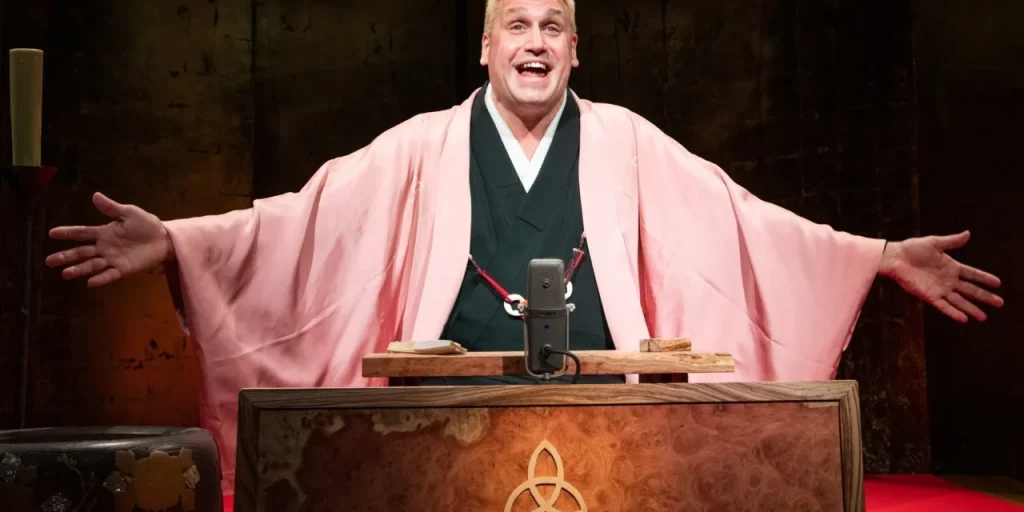
The Japanese language is used extensively in the art genre of rakugo. (Source: Internet)
Choose an appropriate theme that the storyteller has seen or heard, for instance, if you want to write a narrative that is still relevant today about, say, a stingy person, a know-it-all, or a child who has been spoiled.
Pillows are used to acclimate the audience before the main rakugo performance. Frequently, the haori is taken off at this point.
We occasionally perform a short story that is combined with rakugo as a cover before we get to the main part. The same actors play different characters in both short pieces and longer works.
Although it is rakugo’s defining characteristic, listening to it is not challenging.
The same actors play different characters in both short pieces and longer works.
Although it is rakugo’s defining characteristic, listening to it is not challenging. You may even see the dynamic performance of the characters on stage when you see a talented actor on stage.
Each of these rakugo artists has their own distinctive style and is a member of a “association.” The Rakugo Association and the Rakugo Arts Association are the two main groups in the rakugo community, each with its own set of rules and activities.
Manners for Rakugo appreciation
It’s understandable that some individuals would be wary of listening to rakugo since they are unsure of the proper protocol, but nothing to be concerned about.
You won’t have any trouble enjoying rakugo if you are a sensible person and follow the following guides.
- Arrive on time: Be punctual and arrive at the theater before the scheduled start time. Latecomers can disrupt the performance and disturb other audience members.
- Dress appropriately: Rakugo performances are often held in formal settings, so it is best to dress modestly and conservatively. Avoid wearing casual or revealing clothing.
- Turn off electronic devices: Before the performance begins, ensure that your mobile phone, watch, or any other electronic device is switched off or set to silent mode. The sound and light from these devices can be distracting to both the performers and the audience.
- Sit quietly and attentively: Once the performance begins, maintain silence and avoid unnecessary movements. Rakugo requires concentration and focus, so it is important to give your full attention to the performer.
- Do not take photographs or record videos: Taking photos or videos during a rakugo performance is generally not allowed, as it can be disruptive and disrespectful to the performers. Respect the rules of the theater and refrain from any form of recording.
- Avoid talking or whispering: During the performance, refrain from talking or whispering to others. This ensures that everyone can enjoy the storytelling without distractions.
- Show appreciation appropriately: Rakugo performances often include humorous moments and punchlines. It is customary to respond to these moments with laughter and applause. However, excessive or prolonged laughter may disrupt the flow of the performance, so it’s best to follow the cues of the other audience members.
- Respect the performer’s space: The rakugoka performs in a designated area on stage. Avoid leaning forward, stretching out your legs, or otherwise encroaching on their performance space. Maintain a respectful distance and allow the performer to have their own stage presence.
Where Can I Enjoy Rakugo?
Even now, there are still individuals who are primarily recognized as rakugoka, despite the fact that many of them also work in the entertainment sector as voice actors or TV presenters.
There are rakugoka who specialize in merely recreating vintage rakugo sketches, but most modern rakugo material is inspired by sweet everyday drama and still uses characters that date back to the Edo period.
Since the latter substance is not unique, the delivery of it must be outstanding in order for it to be called good. It is common for Japanese children to attend rakugo performances with their schools, ensuring that the art is preserved for future generations.
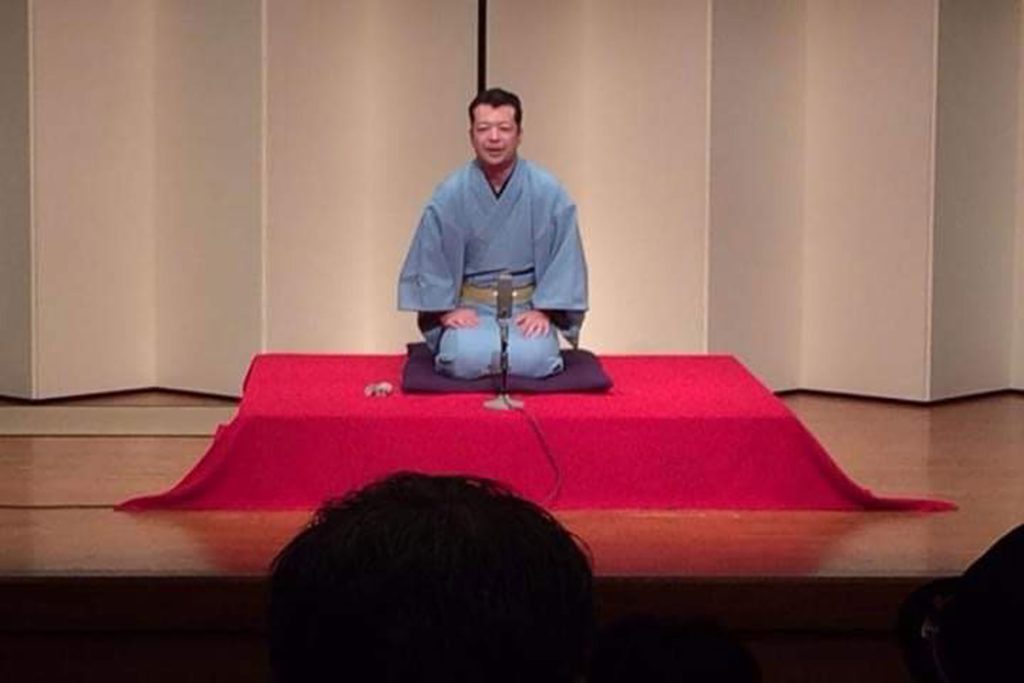
Even now, there are still individuals who are primarily recognized as rakugoka, despite the fact that many of them also work in the entertainment sector as voice actors or TV presenters. (Source: Internet)
Tickets for performances at traditional theaters, or yose, can be purchased for about 3000 yen per person if your Japanese is sufficient or if you simply want to experience the ambiance of a show.
You can visit the Tenma Tenjin Hanjotei in Osaka in addition to the Suzumoto Engeijo in Ueno, the Engei Hall in Asakusa, and the Engeijo in Ikebukuro in Tokyo.
A variety program called Shoten that airs every Sunday night also features rakugo. Videos by British multilingual Diane Kichijitsu of rakugo performances in English can be found on YouTube.
FAQs
1. What does rakugo serve as?
Rakugo, which translates as “fallen words,” is a traditional style of oral storytelling in Japan. Buddhist monks created rakugo in the ninth and tenth centuries to spice up their sermons. The format gradually changed from a hilarious tale to a monologue.
2. What sets rakugo unique?
In rakugo, gestures play a significant supporting role to the spoken word. In other words, rakugo is different from theatrical performances in that gestures are added to supplement the words when it is difficult for the words to adequately convey the meaning of the story on their own.
3. Who has the top position in Rakugo?
After seventeen years of training, Master Shinoharu attained the highest rank of shin-uchi (a master rank rakugo performer). He travels the world to introduce rakugo to new audiences and performs both traditional and innovative stories in both Japanese and English.
4. Is music used in rakugo?
The yose theater is filled with excitement and expectation since music plays a major role in Kamigata rakugo performances.
5. Is rakugo a romantic genre?
Takea Genroku In terms of plot and characters, Rakugo Shinjuu rivals some of the best romantic comedies. It provides us with a distinctive atmosphere where intriguing characters with complex backstories are placed to solve their problems and deal with societal changes.
6. How long is the show of rakugo?
The duration of the performance can be changed from 30 minutes to 1.5 hours at your discretion. The performer has no trouble switching between Japanese and English. She even has a hilarious way of introducing regional dialects.
7. How effective are Japanese stories?
A Japanese tradition of paper theater is extremely effective because we know that role-playing, acting, and the use of props can improve a narrative and give its message and language greater significance for young children.
8. How is the rakugo story organized?
The setup, the body of the story, and the punch line make up the basic framework of a rakugo story. The prelude or setup, known in Japanese as the makura (pillow), comes before the actual plot.
Conclusion
I think you now fully understand “What is Rakugo?” after reading this post. Rakugo, which has been developed from the Edo period to the present, is a sophisticated narrative technique in which one person performs two characters using just body language and gestures.
You will be able to appreciate the stories told and the performers of rakugo more fully if you are familiar with the history of this performing art, which is regarded as a timeless masterpiece.

